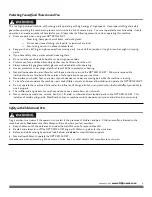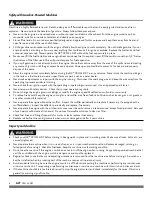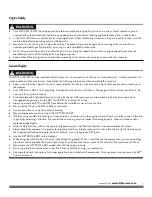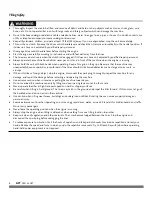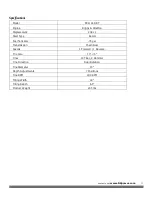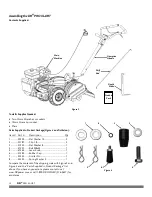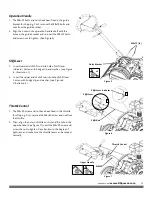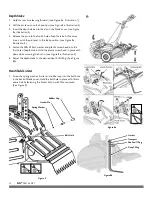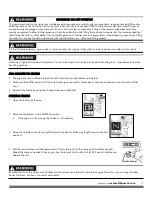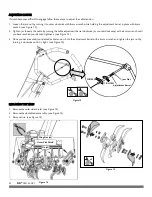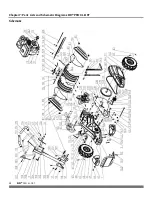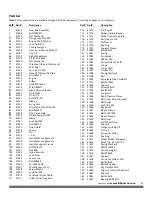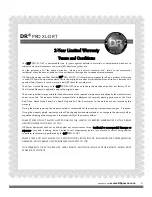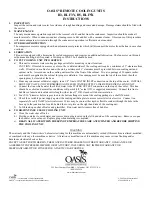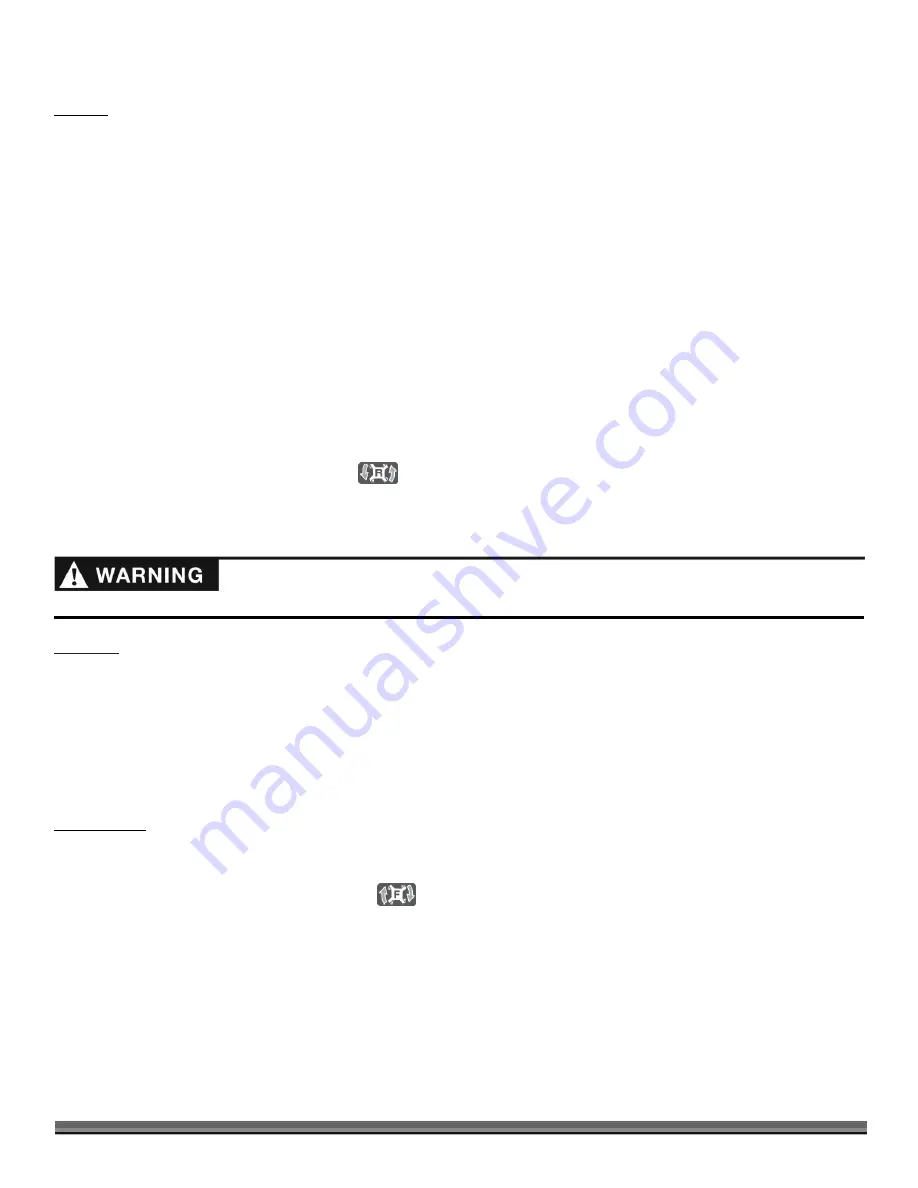
contact us at
www.DRpower.com
19
TILLING
Tilling is digging in, turning over and breaking up garden soil and prepare a seedbed for planting. Best tilling depth is 4”
(100mm) to 6” (150mm). A tiller will also clear the soil of unwanted vegetation. The decomposition of this vegetation matter
enriches the soil.
Avoid tilling soil that is too dry as it will pulverize and produce a dust that will not hold water. Water a few days before tilling. Also,
tilling soil that is too wet will produce unsatisfactory clods. Wait a day or two after heavy rain for the soil to dry.
Better growth will be obtained if an area is tilled properly and used soon after tilling to preserve the moisture content..
The type of soil and working conditions will determine the actual setting of the tilling depth. In some soils, the desired depth is
reached first pass over garden. In other soils, the desired depth is obtained by going over the garden two or three times. In later
case, the depth regulator rod should be lowered before each succeeding pass over the garden. Passes should be made across the
length and width of the garden alternately. Do not try to dig too deeply in the first pass. If the machine jumps or bucks, allow the
unit to move forward at a slightly faster rate.
If the tiller stops forward motion and tries to dig in one spot, rock the handles from side to side to start it moving forward again.
Rocks which are turned up should be removed from the garden area.
Move the depth stake pin lever to the unlock position (See Figure 8a, Illustration 2). Hold the depth stake limiter to pull the
depth stake up for increasing tilling depth. Place depth stake pin in the hole of the depth stake to lock in position at desired
depth.
Place shift lever indicator in counter rotating (
) till position when tilling hard soil.
Hold the drive control bar against the handle to start tilling movement. Tines and wheels will both turn.
Move throttle control to “FAST” position for deep tilling. To cultivate, throttle control can be set at any desired speed,
depending on how fast or slow you wish to cultivate.
TURNING
Release the drive control bar.
Move throttle control to “SLOW” position.
Place shift lever indicator in “F” (forward) position. Tines will not turn.
Lift handle to raise tines out of ground.
Swing the handle in the opposite direction you wish to turn, being careful to keep feet and legs away from tines.
When you have completed your turn-around, release the drive control bar and lower handle. Place shift lever in (till) position
and move throttle control to desired speed. To begin tilling, hold drive control bar against the handle.
CULTIVATING
Cultivating is loosening or digging around growing plants to disrupt weeds and aerate soil. Less than 2” (50mm) depth is
always desirable.
Place shift lever indicator in forward rotating (
) till position when cultivating soft ground or tilling pre-tilled soil.
Move both the depth stake pin lever and the drag stake pin lever to the unlock position (See Figure 8a, Illustration 2 & Figure
11). Hold the depth stake limiter to pull the depth stake up for increasing tilling depth. Place depth stake pin in the hole of the
depth stake to lock in position at desired depth. Lower drag stake to the “Lowered position” (See Figure 11) and lock it in
position.
Hold the drive control bar against the handle to start cultivating movement. Tines and wheels will both turn.
Move the throttle control to the fast position for deep cultivating. To cultivate, throttle control can be set at any desired speed,
depending on how fast or slow you wish to cultivate.
Always lower the drag stake when using the forward rotating tine drive.
IMPORTANT: Always release drive control bar before moving shift lever into another position.

